Masonry Vaults
Form Finding to Fabrication: A digital design process for masonry vaults
Lorenz LACHAUER1, Matthias RIPPMANN1, Philippe BLOCK2
1Research Assistant, Institute of Technology in Architecture, ETH Zurich Wolfgang-Pauli-Strasse 15, HIL E 43.2
2Assistant Professor, Institute of Technology in Architecture, ETH Zurich
It is common practice in engineering to represent a continuous stress field by a network of discrete forces, e.g. hanging models (Gaudí), cable nets (Otto) or strut-andtie models (Schlaich).
These discrete force networks allow the user to visualize, grasp and control the flow of forces in an intuitive manner.
A recent computational advance in this field is Thrust Network Analysis (TNA), which allows form finding controlled through discrete force diagrams.
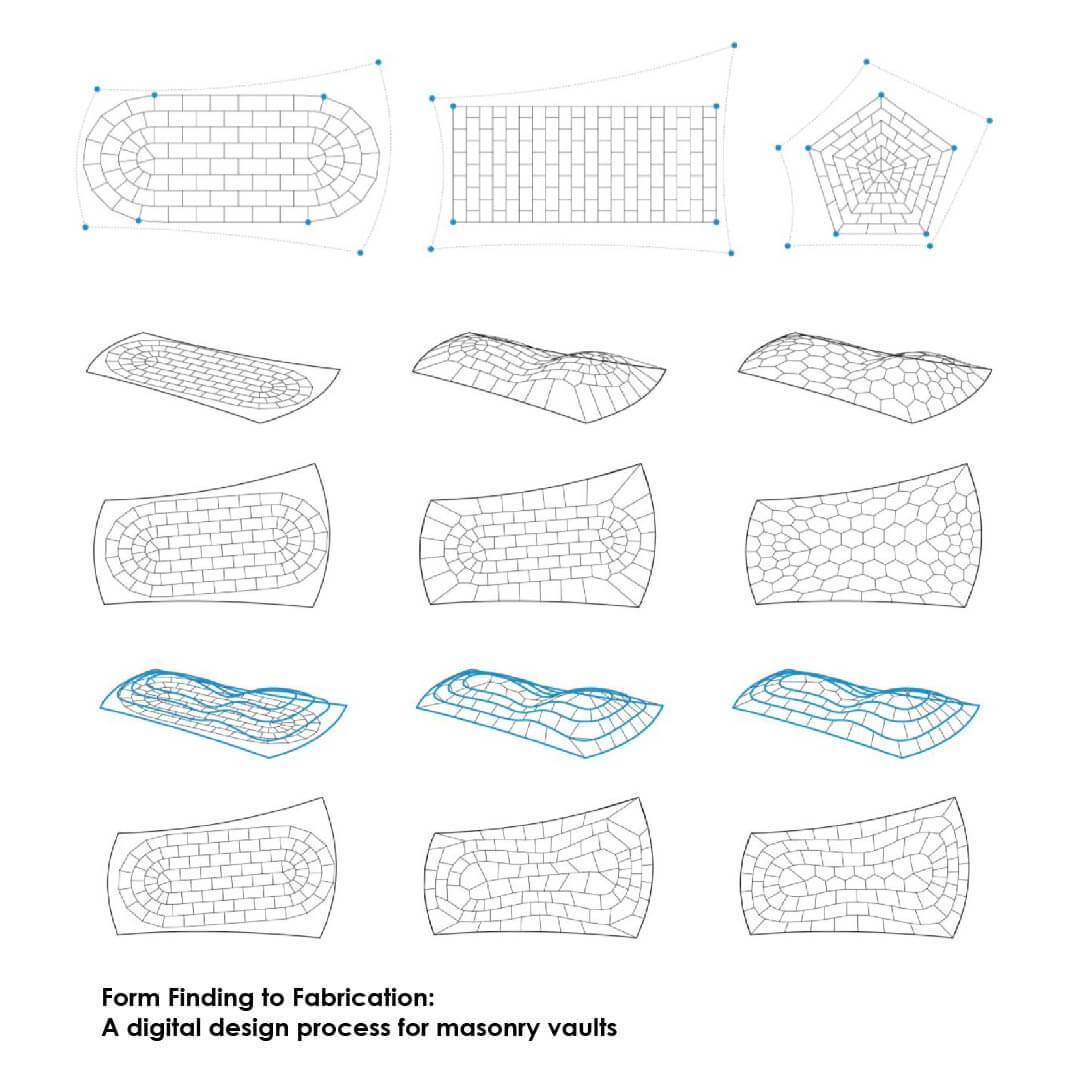 In this paper, a fully digital design process –from form finding to fabrication– for compression-only masonry shells will be presented.
In this paper, a fully digital design process –from form finding to fabrication– for compression-only masonry shells will be presented.
The challenge is to provide a smooth and efficient generation of different data representations of the discrete geometry of the force (or thrust) network for the use in structural and experimental modelling, discrete element modelling (DEM) software, or fabrication.
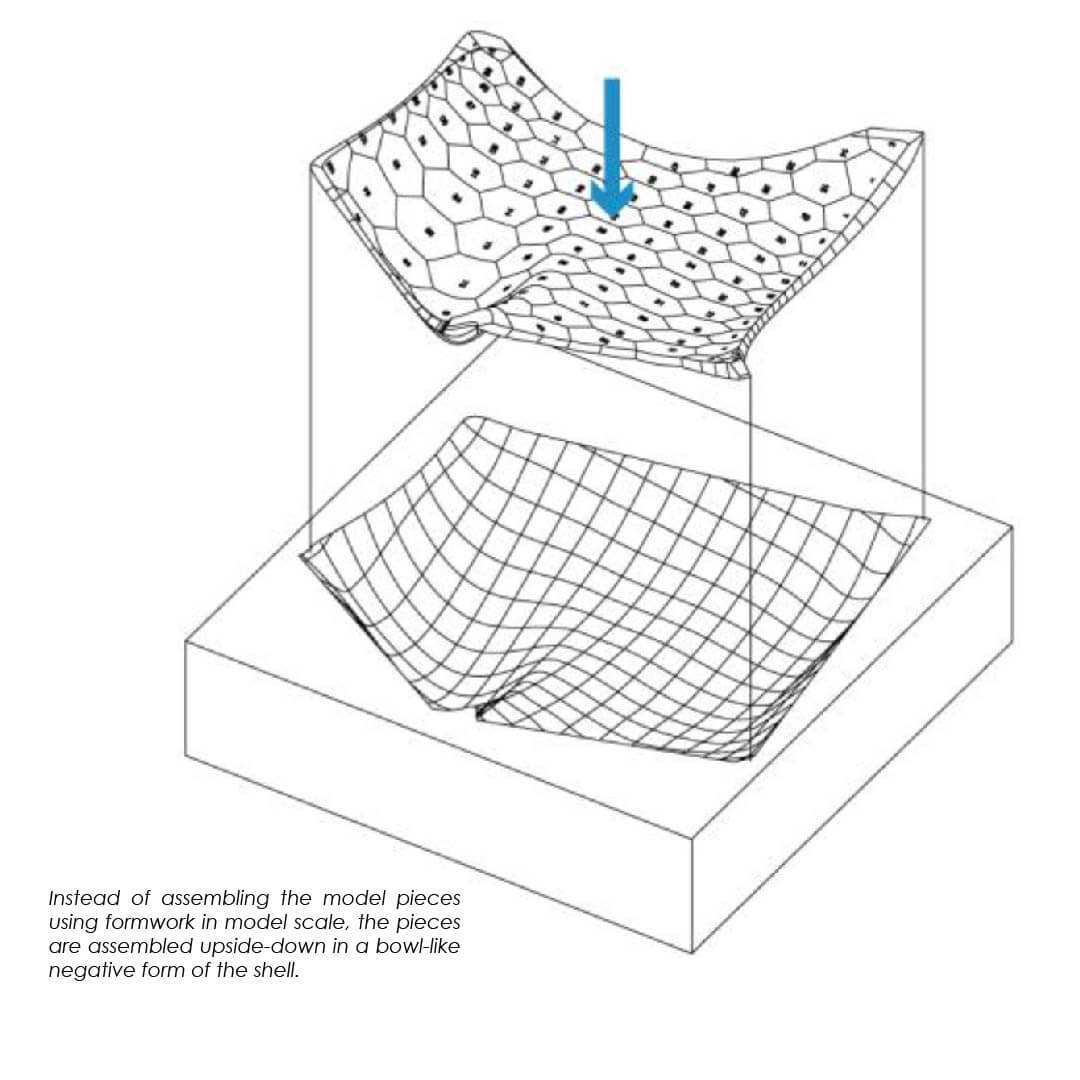 The TNA method has been implemented in existing CAD software, offering fully interactive control of the boundary conditions, the internal stress field and the weight distribution of the shell.
The TNA method has been implemented in existing CAD software, offering fully interactive control of the boundary conditions, the internal stress field and the weight distribution of the shell.
The discrete thrust network is linked to a NURBS surface to derive continuous geometric information, hence allowing the automatic generation of the shell volume according to its self weight.
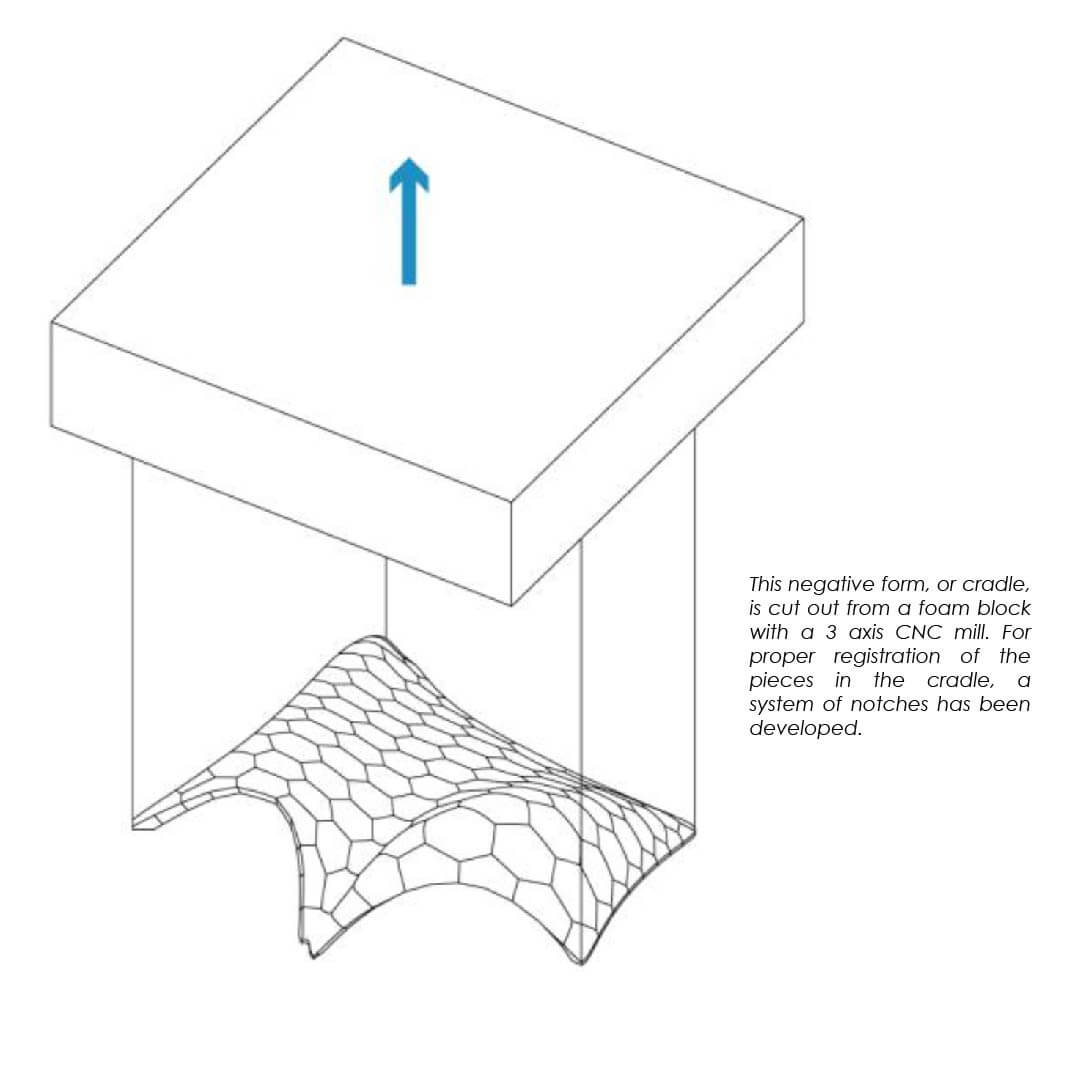 This paper describes a continuous digital design workflow for masonry vaults, based on the form-finding technique Thrust Network Analysis (TNA).
This paper describes a continuous digital design workflow for masonry vaults, based on the form-finding technique Thrust Network Analysis (TNA).
This method allows the design of compression-only networks based on discrete force diagrams. The resulting equilibrium networks are the control geometry of continuous NURBS surfaces which are used for the generation of stone block geometries, analysis data, and fabrication and construction information.
In order to process these different data representations, commercial software packages and CAD programs are used, connected and extended via custom developed interfaces to increase the software’s capabilities.
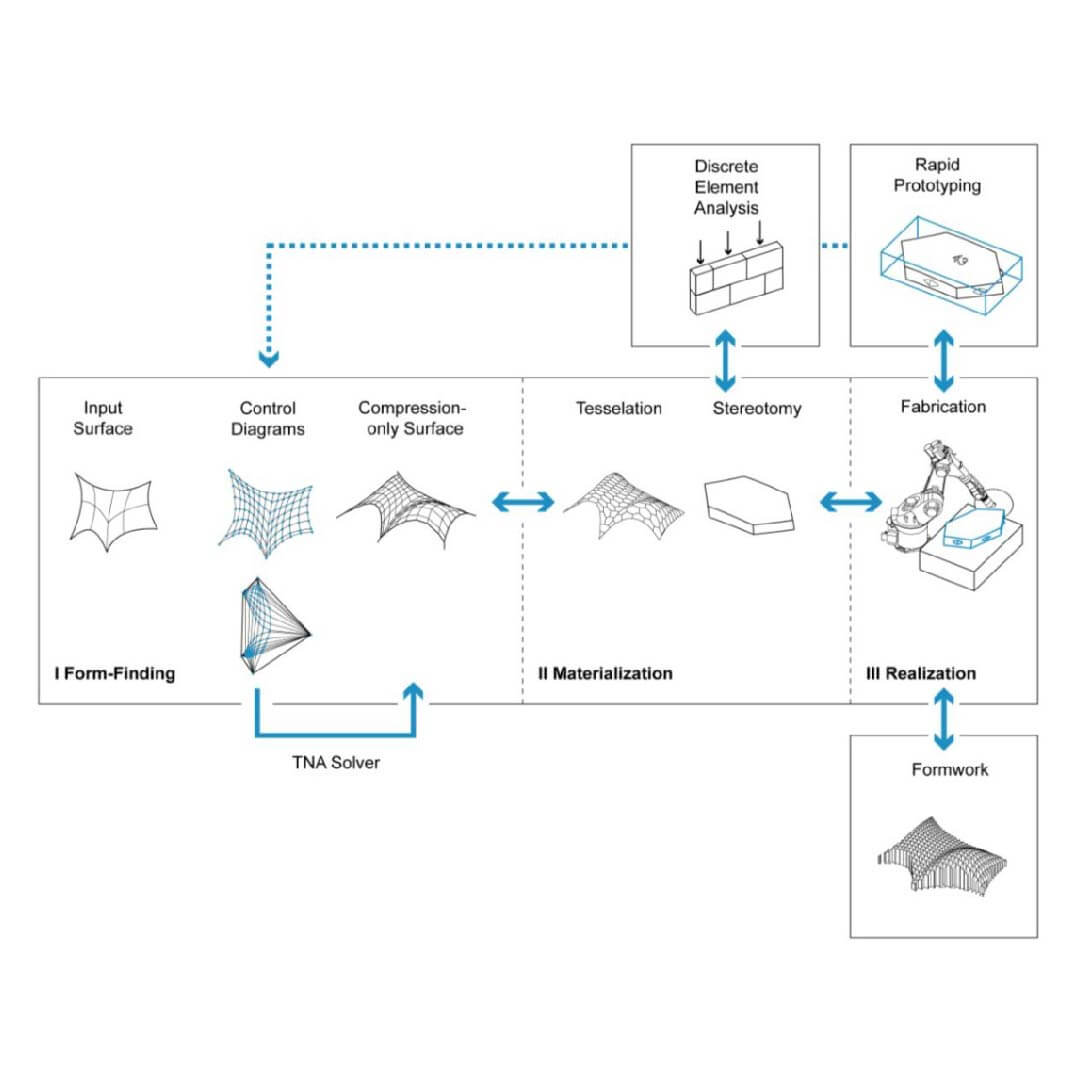 The sophisticated, but well-defined task of shell design allows the setup of a tight prototypical computational workflow in vitro.
The sophisticated, but well-defined task of shell design allows the setup of a tight prototypical computational workflow in vitro.
The paradigm for this approach is the work of Heinz Isler, who developed a tight design process for shells based on physical models.
The consistent integration of design information with geometric data, presented in this paper, may be interpreted as project-specific Building Information Modelling (BIM).





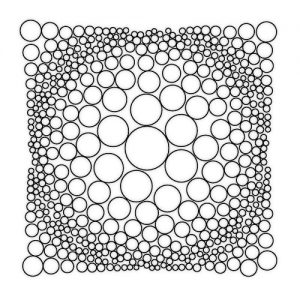























Comments